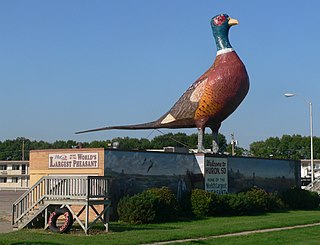
Huron is a city in and the county seat of Beadle County, South Dakota, United States. The population was 14,263 at the 2020 census, and it is the 8th most populous city in South Dakota.
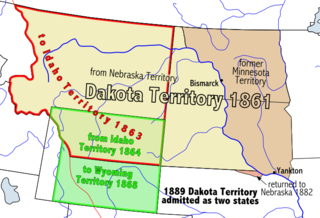
The Territory of Dakota was an organized incorporated territory of the United States that existed from March 2, 1861, until November 2, 1889, when the final extent of the reduced territory was split and admitted to the Union as the states of North and South Dakota.
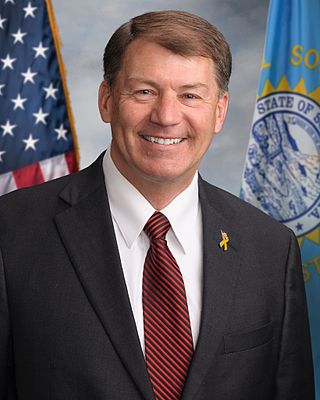
Marion Michael Rounds is an American businessman and politician serving as the junior United States senator from South Dakota since 2015. A member of the Republican Party, he served as the 31st governor of South Dakota from 2003 to 2011.
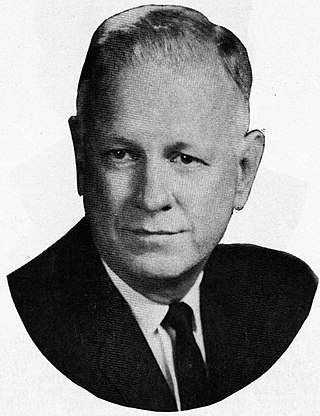
Nils Andreas Boe was an American attorney who served as the 23rd Governor of South Dakota from 1965 to 1969. He served as a judge of the United States Customs Court, later the United States Court of International Trade.

The 1962 United States Senate elections was an election for the United States Senate. Held on November 6, the 34 seats of Class 3 were contested in regular elections. Special elections were also held to fill vacancies. They occurred in the middle of President John F. Kennedy's term. His Democratic Party made a net gain of four seats from the Republicans, increasing their control of the Senate to 68–32. However, this was reduced to 67–33 between the election and the next Congress, as on November 18, 1962, Democrat Dennis Chávez, who was not up for election that year, died. He was replaced on November 30, 1962, by Republican appointee Edwin L. Mechem. Additionally, Democrat Strom Thurmond became a Republican in 1964, further reducing Democrats to 66–34. This was the first time since 1932 that Democrats gained seats in this class of Senators.

Huron Regional Airport is in Huron, in Beadle County, South Dakota. The airport has charter passenger flights operated by fixed base operator (FBO), Fly Jet Center and Revv Aviation. Revv Aviation wants to bring all services to Huron including maintenance, avionics, flight school and charter.

William John Bulow was an American politician and lawyer. He was the first Democratic Governor of South Dakota, serving from 1927 to 1931. He received the highest number of votes of any Democratic candidate for governor in the state up to that time. Bulow then went on to serve as a member of the United States Senate from South Dakota from 1931 to 1943.

Coe Isaac Crawford was an American attorney and politician from South Dakota. He served as the sixth Governor and as a U.S. Senator.

Huron University, also known as Si Tanka University at Huron, was a private university formerly located in Huron, South Dakota. Founded in 1883, it closed on April 1, 2005.
Charles William Maynes was a United States diplomat and long-time editor of Foreign Policy magazine.
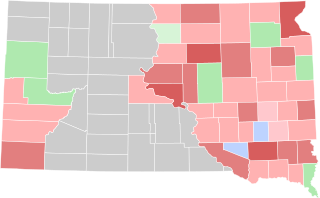
The 1892 South Dakota gubernatorial election was held on November 8, 1892. Incumbent Republican Governor Arthur C. Mellette declined to seek re-election to a third term. Former territorial legislator Charles H. Sheldon was nominated by the Republican Party as Mellette's replacement, and he faced former legislator Abraham Lincoln Van Osdel, a leader in the South Dakota Farmers' Alliance and the nominee of the Independent Party, along with Democratic nominee Peter Couchman, in the general election. The result was largely a replay of the 1890 election, with Sheldon winning by a large margin, but only a plurality, and Van Osdel taking second place over Couchman.

The 1942 United States Senate election in South Dakota took place on November 3, 1942. Incumbent Democratic Senator William J. Bulow ran for re-election to a third term. During the primary, Bulow was attacked for being insufficiently supportive of President Franklin Roosevelt's foreign policy and war preparedness. Former Governor Tom Berry, Bulow's chief opponent, drew a contrast between Bulow's isolationism and his support for Roosevelt's policies. In the end, Berry defeated Bulow in a landslide, and advanced to the general election, where he faced Harlan J. Bushfield, the incumbent Republican Governor of South Dakota. As Republicans gained ground nationwide, Bushfield defeated Berry in a landslide to pick up the seat for the Republican Party. Bushfield did not serve his full term, however; shortly before the 1948 U.S. Senate election, he died.
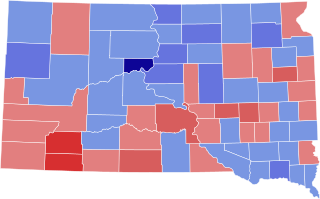
The 1930 United States Senate election in South Dakota took place on November 4, 1930. Incumbent Republican Senator William H. McMaster ran for re-election to a second term. After beating back a challenge in the Republican primary from former State Senator George J. Danforth, McMaster faced Democratic nominee William J. Bulow, the incumbent Governor, in the general election. As the Democratic Party performed well nationwide, Bulow narrowly defeated McMaster.

Mary "Mamie" Shields Pyle was a women's suffrage leader in the U.S. state of South Dakota. She was instrumental in the state's enactment of women's suffrage in 1918.

John L. Pyle was an attorney and politician from the state of South Dakota. A Republican, he was notable for his service as State's Attorney of Hand County (1886-1888) and state Attorney General (1899-1902).

The 1920 South Dakota gubernatorial election was held on November 2, 1920. Incumbent Republican Governor Peter Norbeck declined to run for re-election, instead choosing to run for the U.S. Senate. Lieutenant Governor William H. McMaster won the Republican primary and advanced to the general election, where he faced Nonpartisan League candidate Mark P. Bates and former State Senator William W. Howes, the Democratic nominee. The election was largely a replay of the 1918 election, with McMaster winning a large victory, Bates coming in second, and Howes coming in a distant third.

The 1924 South Dakota gubernatorial election was held on November 4, 1924. Incumbent Republican Governor William H. McMaster declined to run for re-election to a third term, instead opting to run for the U.S. Senate. Lieutenant Governor Carl Gunderson won the Republican primary unopposed. In the general election, he faced three prominent opponents: Democratic nominee William J. Bulow, a former State Senator and Mayor of Beresford; Farmer–Labor nominee A. L. Putnam; and perennial candidate Richard O. Richards. Gunderson. With the left-leaning vote split, Gunderson won the election in a landslide.
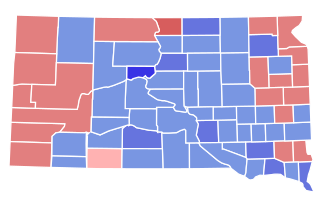
The 1928 South Dakota gubernatorial election was held on November 6, 1928. Incumbent Democratic Governor William J. Bulow ran for re-election to a second term. In the general election, he faced Attorney General Buell F. Jones, the Republican nominee. Despite Republican presidential nominee Herbert Hoover overwhelmingly defeating Democratic nominee Al Smith overwhelmingly in South Dakota, Bulow defeated Jones by a decisive margin to retain the governorship. In so doing, he became the first Democratic candidate for Governor to receive a majority of the vote in the state's history.

The 1930 South Dakota gubernatorial election was held on November 4, 1930. Incumbent Democratic Governor William J. Bulow declined to run for re-election to a third term, instead opting to successfully run for the U.S. Senate. The Republican nomination was hard-fought and the primary was crowded; because no candidate received 35% of the vote, state law required that the nomination be decided at a state party convention. There, former State Senator Warren Green, the last-place finisher in the primary, defeated Secretary of State Gladys Pyle, the plurality winner. In the general election, Green faced D. A. McCullough, the state's Rural Credits Commissioner and the Democratic nominee. Despite Bulow's success in the preceding two elections, Green defeated McCullough by a decisive margin—even as Bulow himself was elected to the U.S. Senate.

The 1936 South Dakota gubernatorial election was held on November 3, 1936. Incumbent Democratic Governor Tom Berry ran for re-election to a third term, the first Governor of South Dakota to do so. Berry was challenged by Republican Leslie Jensen, the former Collector of Internal Revenue for the state of South Dakota. Both Berry and Jensen won their primaries uncontested and advanced to the general election. Some drama surrounded the potential candidacy of Democratic State Auditor George O'Neill as an independent candidate for Governor or, in the alternative, his cross-party endorsement of Jensen; after initially announcing his campaign and hedging, O'Neill dropped out of the race in September and endorsed the Democratic ticket in the state, including Berry.



















